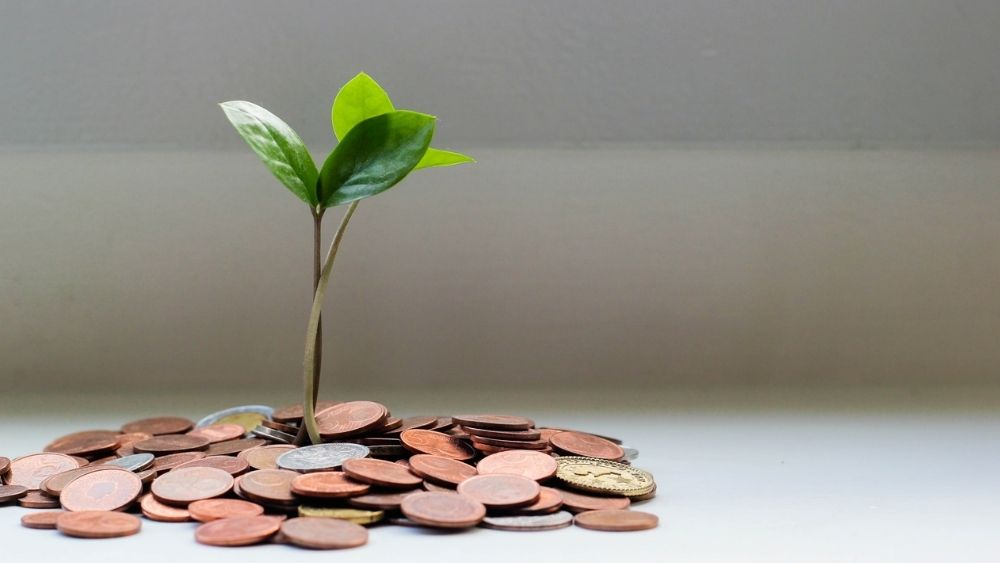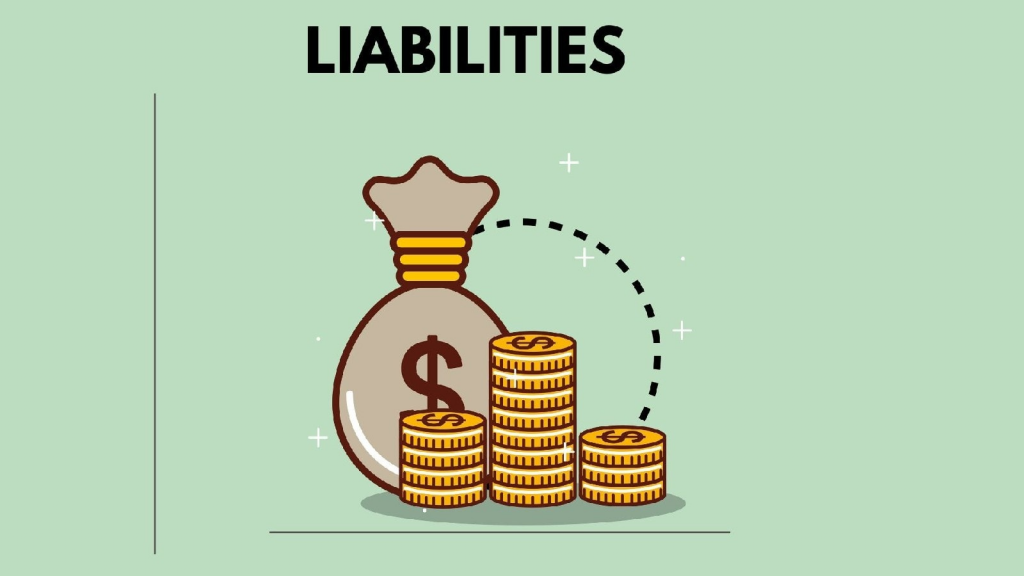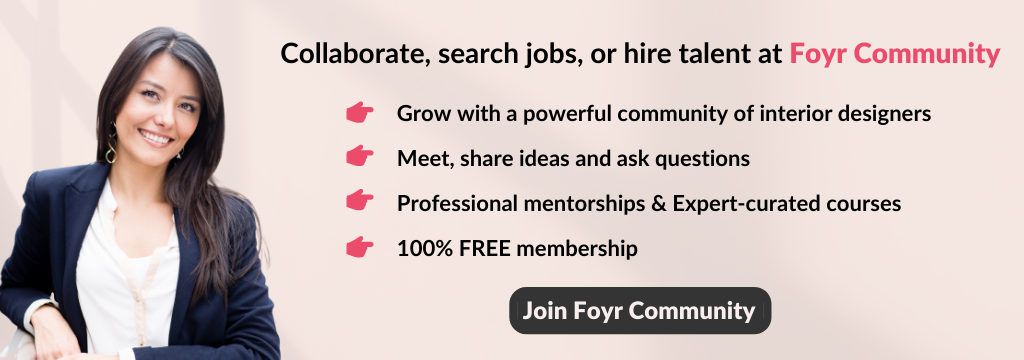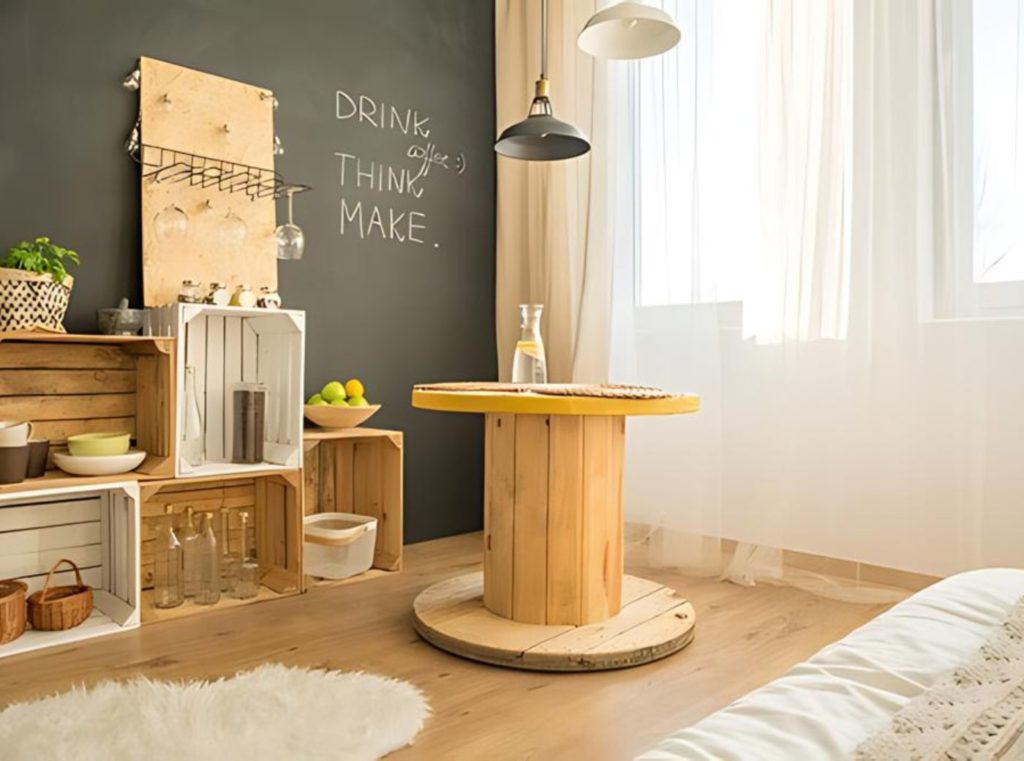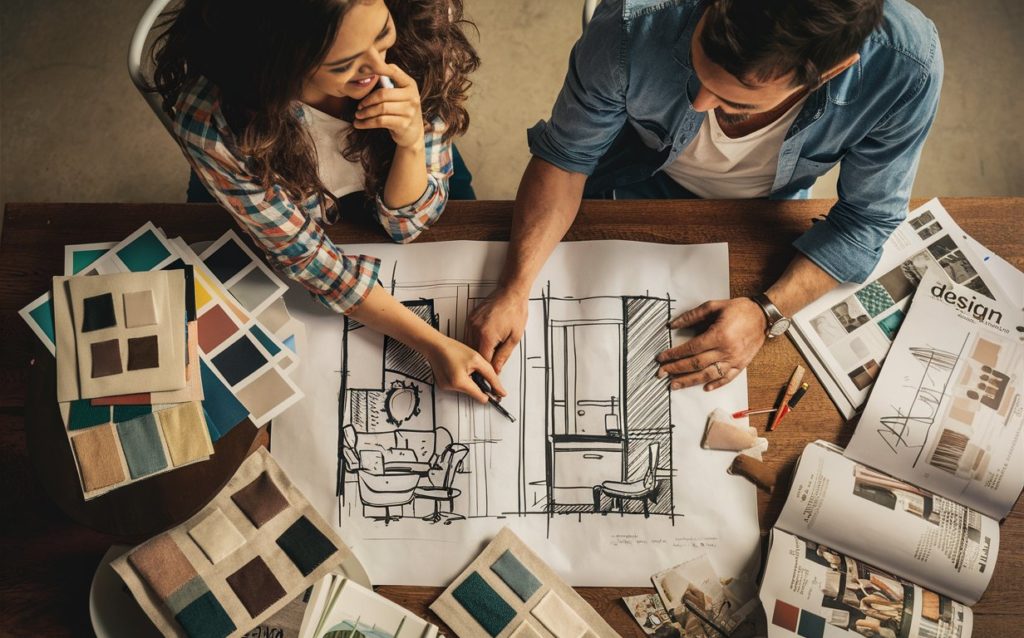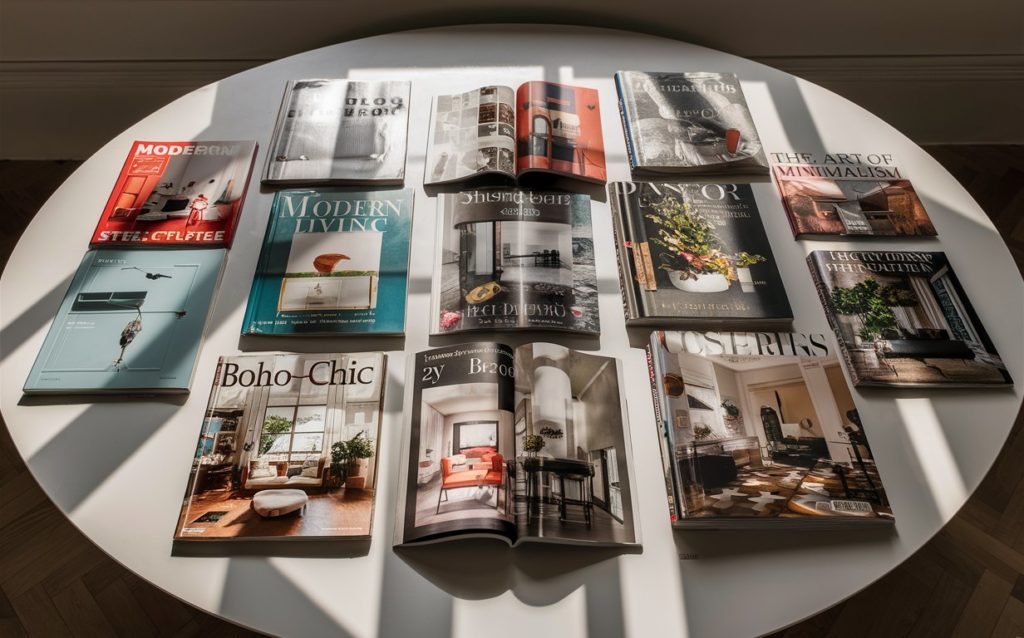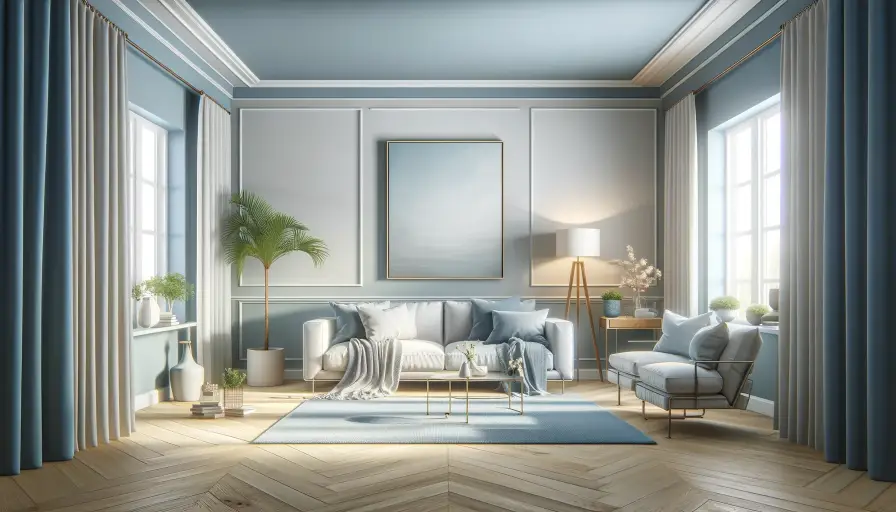Funding for Interior Design Business
Deciding to raise money for your business can feel exhilarating and overwhelming at the same time. On one hand, it’s an exciting opportunity for growth, expansion, and unlocking new possibilities.
Conversely, raising funds can be stressful and time-consuming, often filled with meetings about valuations, business plans, and financial projections that can take focus away from daily operations. As any startup founder knows, some days are better than others, but when done right, the risk can lead to significant rewards.
If approached strategically, fundraising for interior designers doesn’t have to be different from other businesses. It can help you grow to the next level by expanding your offerings, improving efficiency, and even leveraging home design software to streamline client projects. However, it’s essential to learn from common mistakes, set realistic expectations, and plan effectively for success.
Whether you aim to scale your services, invest in better tools, or enhance your interior design services, we’re here to guide you. In this article, we’ll explore the most common questions about fundraising for interior designers, how the process works, different types of fundraising options, and 15 expert-backed tips to help you feel confident and well-prepared.
Image Credit: TechSoup Blog
Deciding When to Raise Funds
Fundraising for interior designers with both small and mid-sized businesses is typically considered when the business is facing an opportunity to grow but doesn’t have sufficient capital to take advantage of this opportunity.
In reality, this could mean that one or more large projects are dependent on you adding more employees to handle the workload, or that an increase in your new business could be propelled by getting real estate in a new region as a showroom or office. Regardless of the reason, investment is usually sought (and granted) because there is an untapped opportunity with a reasonable expectation of success.
Below we break down three common phases most businesses experience throughout their growth and the considerations for fundraising that might be relevant at each phase.
1. Startup Phase
When your business is just an idea, or even if you’ve already put together a business plan, you still may need revenue to actually prove that your idea is viable and that paying clients will continue to show up. While interior design businesses can have relatively low startup costs, it can still be necessary to use a small sum like $10,000 to acquire a lease, basic equipment and software, and conduct basic marketing efforts.
Unless you have an entirely unique business approach to interior design services that has a clear ability to grow quickly and provide a significant return on investment (ROI), it may be difficult for interior designers to fundraise when first starting unless they are borrowing from family and friends – which many people do.
Read also – 15 Problems Most Interior Design Business Faces
2. Growth Phase
If you have been running your business for a few years you’ve likely solved at least some key challenges like the following:
- Basic operational standards and practices
- How to source new business
- Learning about your ideal client profile and how to pick a service niche
Because you’ve invested your own time and resources, you’re now ready to go to the next level but you need outside support. Even businesses that appear successful to an outside observer might be barely getting by because they have high overhead costs, or because the founder is reinvesting profits to help growth.
In fact, well-known companies like Uber are still not guaranteed to be profitable. New capital investment can breathe life into this business by allowing them to make several larger investments at one time.
Read also – How To Generate More Revenue for Interior Design Business?
3. Transition Phase
When it’s time to sell your business it can take time to find a qualified buyer with the financial means to secure your business. While this isn’t technically the same as fundraising for your business, it still involves consultation with institutions that provide capital (banks, private equity, etc.).
There are websites and business brokers that can help you get connected with potential buyers. These brokers will help vet inquiries about purchasing your business to ensure they are serious, qualified, and have the financial capability to actually purchase your business.
Image Credit: Charity Digital
Common Reasons for Fundraising:
Why go through all of the work and effort to raise money? At times, your dream of owning a business may feel more or less within reach. But, once you’ve decided to fundraise for your business, you need to be clear about your vision for the company and have specific ideas about how to use the money.
In most cases, investment funds are used to grow a business. Here are some of the most common reasons that business owners decide to pursue fundraising:
- Hire employees needed for new services or to scale existing services.
- Make capital investments in equipment, spaces, inventory, etc.
- Sales and marketing costs to help secure new business or partnerships.
- Increase the profile of your business and give you access to a broader network of assistance and strategic support or guidance.
Just because you have opportunities presented to you does not mean that your business can handle a dramatic increase in business. In fact, it’s actually possible to grow your business out of existence.
As outlined in reasons number one and two above, many businesses decide to fundraise so that they can grow their capacity through headcount, inventory, or office space to accommodate increased demand. This is a calculated decision based on the business’ perceived ability to maintain growth over time.
Read also – 12 Expert Tips To Get New Clients for Interior Design Business
Image Credit: AllBusiness.com
How Does Business Ownership Change When You Fundraise?
Once business owners decide to fundraise, they typically have questions like the following: does the ownership structure change? Will I be giving up control of the business? These types of questions are serious and should be considered thoughtfully, because the answer in both cases is often yes, though not always to an extreme degree.
Business ownership can change in many different ways, including from sole ownership to a partnership, or by transferring partial ownership of the business to shareholders. Exactly how ownership will change depends on your legal structure and the nature of your investment.
If you’re going to raise money, expect increased governance and oversight both operationally and financially, though this depends on how much money you raise and from whom. Most investors will want (either for themselves or a qualified representative) to ensure that they have a say in the business’s direction, mission, and performance management. It’s wise to have these conversations openly and candidly with potential investors before signing any paper.
Before investors put money into a business, or before a business is sold, there’s always a process called due diligence. This process describes a series of questions and checks that investors will require to be answered prior to any money being provided.
Investors will want to confirm that you actually do have to pay customers, that your accounting is accurate, that you have a good professional reputation, that you have a valuable brand, etc.
Read also – The Complete Guide To Interior Design Project Management
Image Credit: computercareers.org
Are Interior Designers Highly Paid Once They’ve Completed Fundraising?
It’s critical to align your personal earning expectations with reality. Just because you’re raising money does not mean that you can suddenly start making six figures and taking it easy on the weekends. In fact, as a company founder or co-founder, you may not be making any money from the business during the first few months (or years). A study from 80,000 Hours found that founders of startups participating in the prestigious Y Combinator (which birthed AirBnB), only paid themselves an average of $50,000 annually.
Remember that once you’ve taken on outside investment, the company’s financials will be much more open to scrutiny by accounting firms, aboard, and investors. This means that you will be accountable for how company money is used. If you ask for $200K to grow your interior design business but $100K is allotted for your own salary, you’ll have a hard time finding eager investors.
Investment money should have a specific purpose; it’s an investment, not a reward. This doesn’t mean that you should be afraid of raising money to expand your business. But, you should be prepared to maintain a low salary even if additional cash shows up in the bank account. The stewardship of other people’s money is a big responsibility, and it’s important to take it seriously and to the best of your ability.
Read also – 10 Powerful Networking Tips for Interior Designers
Image Credit: marketing91.com
Are You Personally Liable For Company Debts?
Personal liability should also be considered an important part of raising money.
Your own liability for business debts depends largely on the legal structure of your business. Sole proprietorships shift much of the business’ liability to the individual owner, whose own property and personal assets could be at risk if the business conducts illegal activities, fails to pay back debts, or gets involved in a legal issue with a client, creditor, or other entity.
Limited liability companies (LLCs) allow the company to absorb risk and are generally considered to be a safer corporate structure. A qualified business attorney should be consulted to ensure you understand the potential impacts of personal liability.
Read also – The Ultimate Guide To Pricing Strategy For Interior Designers
Image Credit: Asana.com
15 Tips on How to Raise Funds for Your Interior Design Business:
1. Network like crazy inside and outside of the interior design community. In-person and virtual networking events are an excellent way to meet people who might be able to introduce you to potential investment sources later on.
2. Have a compelling pitch that invites others to participate in your business, not just inject money. Yes, investors want to see how they can make money, but they also want to see what makes your business unique and different. Build a bullet-proof portfolio as part of this messaging and include lots of client testimonials.
3. Be prepared to spend a lot of time fundraising. This is particularly true if you want to be a high-growth business that frequently raises capital. As an owner and the leader and figurehead of the company, you could become more of a public face. Your responsibilities may shift from operations and client relationships to investor meetings, board meetings, strategic planning, and talent management.
4. Understand your business’ value in real terms like total revenue, intellectual property, etc. The emotional value that you attach to your business will not necessarily be shared by investors, though they will appreciate your passion.
5. Write a business plan that outlines exactly why you’re raising money and how it will be used. Include your business’ vision, mission, and future state in 3-5 years. Be specific about growth plans and the sales and marketing plans that will be used.
6. Know how much money you need so you can ask for the right amount, and not too much or too little.
7. Research grants or startup institutions that might be willing to provide you with small amounts of capital. This might be easier to secure if you qualify as a woman, minority, or veteran-owned business as some nonprofit organizations specifically seek out these types of businesses for investment.
8. Apply for startup competitions. Many of these competitions provide graduated levels of investment depending on how far you make it in the competitive fundraising events.
9. Ask friends and family if they are willing to invest, but be careful about clearly outlining expectations. It’s best to use a 3rd party for drafting contracts and facilitating these types of transactions.
10. Hire a business lawyer to check the documentation and all agreements.
11. Find an angel investor using a website like Equity Net who is willing to provide capital from the very start of your business.
12. Ask a bank to provide funds in the form of debt capital, which is essentially a loan. Terms on these loans can be quite favorable and help you quickly access cash.
13. Use a crowdsourced funding website and create a social media campaign to raise money from site members through targeted outreach. This is the best way to catch the eye of potential investors, even if you’re not in New York or the San Francisco Bay area.
14. Prepare for the investment by putting systems and processes in place for operational efficiency.
15. As an alternative to these fundraising ideas, you could also produce a cash infusion by asking clients to pay in advance, and giving them a discount for doing so.
Conclusion
In your strategic plans, make sure you account for any significant investments that need to be made in your design firm. These might include capital expenditures (building, equipment, inventory). An affordable but high-performing interior design platform should be on your list of must-have investments.
However, interior design software like Foyr is an investment that will provide huge returns in several ways. First, you will save time on projects through increased efficiency. Second, you’ll be able to deliver results that exceed client expectations and work smarter with more collaborative tools.
Lastly, you can consolidate a suite of tools into a single-source solution that’s more cost-effective and easier to use for design professionals.
If you’re curious how Foyr Neo can be the best investment you make today, try our 14-day risk-free trial. Sign up now and start designing stunning layouts with lifelike renderings in minutes.




